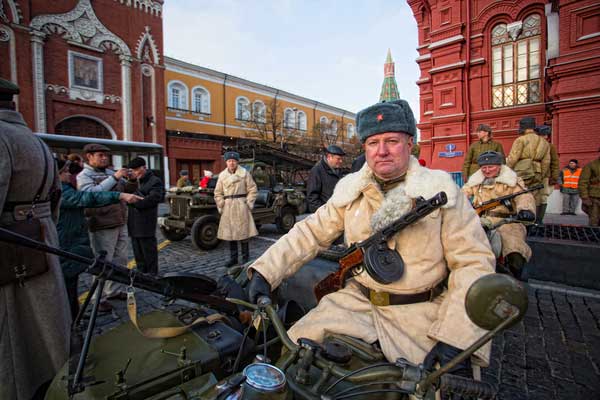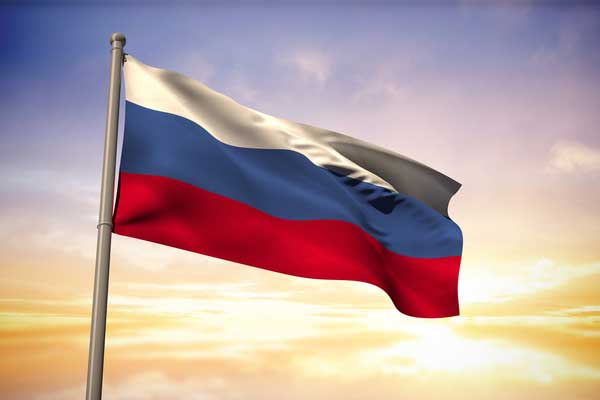Russia, the largest country in the world, is home to many intriguing cities beyond its famous capital Moscow and cultural hub St. Petersburg. While these major metropolises attract millions of visitors each year, Russia’s vast landscape contains diverse and unique cities that remain relatively unexplored. By journeying across Russia’s varying terrain from the Arctic coasts to its Far Eastern borders, we uncover captivating urban areas lost in time and obscured from the outside world.

Moscow: Russia’s Vibrant, Cosmopolitan Capital
With a population of over 12 million, Moscow is Russia’s bustling capital and economic stronghold. Situated in the country’s western region, Moscow experiences a temperate continental climate. Winter temperatures average around -10°C but can plunge below -20°C. Summers are mild and sunny with averages of 19°C.
The historic city center, anchored by the iconic Red Square and St. Basil’s Cathedral, contains many striking examples of Russian architecture. Skyscrapers and high-rise buildings dominate the skyline, housing Moscow’s extensive population within the city’s compact 2511 km2 area. Real estate prices reflect Moscow’s desirability, with rents for even modest apartments starting around $800 per month.
As Russia’s seat of power, Moscow harbors opulent palaces like the medieval Moscow Kremlin complex along with luxury hotels, restaurants, and shopping. By night, the city comes alive with crowds flocking to theaters, clubs, and bars. Moscow tempts visitors with endless sights, sounds, and experiences befitting a world capital.
St. Petersburg: Russia’s Window to the West
While Moscow anchors Russia’s eastern realm, the port city of St. Petersburg has connected Russia to Western Europe for over 300 years. Founded by Peter the Great in 1703, lavish imperial palaces and Italianate architecture echoes St. Petersburg’s origins as the Russian Empire’s showpiece capital.
Strategically situated on the Neva River estuary, St. Petersburg remains Russia’s gateway to the West. The city lies only a few hours’ drive from neighboring Finland and Estonia. Its northern latitude blesses St. Petersburg with the otherworldly phenomenon of White Nights during the summer solstice when daylight can last up to 19 hours. Locals celebrate with city-wide festivals and all-night revelry befitting this City of Light.
But St. Petersburg is more than glittering palaces and graceful canals. During World War II, the city endured a brutal 872-day siege by Nazi forces. As Leningrad, over one million perished during the blockade – further etching the city’s name into Russian history.
Today, over 96% of St. Petersburg’s 5 million residents identify as ethnic Russians. Yet its proximity to Europe lends St. Petersburg a more cosmopolitan air compared to Moscow. Nicknamed the “Venice of the North,” St. Petersburg charms visitors with its baroque architecture, world-class museums like the sprawling Hermitage, and lively cafe culture.
Mysterious Karelia and its Finnish-Russian Roots
Nestled between Finland and Russia’s northwest border lies the Republic of Karelia. Separated from the Finnish mainland by Lake Ladoga, the region’s history intertwines both Russian and Finnish cultures. Karelia covers 180,000 km2 dominated by dense boreal forest punctuated with over 60,000 lakes. This pristine wilderness provides timber for the logging industry and bountiful berries for export.
The capital Petrozavodsk features the unique architectural style of decorative wooden housings in vibrant shades of blue, yellow, and green. Buildings constructed by Finns who historically populated this border region create a colorful Nordic atmosphere differentiated from standard Russian cities.
Beyond Petrozavodsk, Kizhi Island in Lake Onega safeguards Russia’s wooden architecture legacy. Centuries-old log churches, windmills, and peasant homes have been meticulously restored and comprise an open-air museum showcasing historic rural life. Visitors can experience traditional Karelian culture through demonstrations of arts, crafts, and foods.
Although firmly Russian today, Karelia’s geography and history retain the compelling spirit of a borderland between two worlds. For an off-the-beaten-path adventure in northwest Russia, Karelia merits a visit.

Sakhalin Island: Russia’s Far Eastern Frontier
Isolated in the Sea of Okhotsk, Sakhalin Island occupies Russia’s farthest eastern reaches just north of Japan. Mountainous and forested, this remote island spanning over 72,000 km2 has witnessed centuries of dispute between Russia and Japan with both powers vying for control.
The city Yuzhno-Sakhalinsk on the island’s southern end showcases standard Soviet architecture and planning. But beyond urban areas, crumbling abandoned buildings and temples reflect Sakhalin’s forgotten history and uncertain future. Japan governs the islands directly south while Sakhalin drifts in frozen isolation.
Fishing and forestry dominate the economy yet mines left over from Japanese occupation attract adventurous tourists. Outside Yuzhno-Sakhalinsk, hilltop lighthouses stand abandoned as migratory birds now inhabit their watchtowers. Whale watching also draws intrepid visitors to Sakhalin’s shores in summer.
But tourism infrastructure is limited on this sparsely populated, hard-to-access island. The easiest connections are via flights from mainland Russia or seasonal ferry crossings. Retaining the allure of the Wild Russian East, remote Sakhalin rewards travelers seeking wild natural beauty and echoes of Russia’s intriguing past.
The Russian Republic Forgotten by Time: Tuva
Wedged between western Mongolia and southern Siberia, the Republic of Tuva has slumbered in isolation for centuries. Of Turkic nomadic origin, Tuva covers vast steppe and mountainous terrain larger than many countries at 168,500 km2.
In accessibility has preserved Tuva’s traditions. Camel caravans still ply ancient trade routes while shepherds herd livestock across high pastures as they have for generations. In towns, simple wooden cottages exist with few modern amenities. Tuva’s capital Kyzyl possesses unpaved, dusty streets and blackened skylines from coal furnaces. Without proper rubbish collection, garbage piles up on roadsides and in parks.
Shamanistic animism endures as the majority religion. Ritual sites like cave temples with offerings for spirits dot the rugged landscape. Throat singing and traditional Tuvan instruments like igil fiddles resonate for festivals. But unemployment exceeds 25% forcing many Tuvans to migrate, threatening the loss of their heritage. For now, Tuva’s nomadic rhythms continue far removed from modern Russian life. Visit soon before the winds of change transform Tuva’s timeless culture.
The Chilling Ghost City of Vorkuta
Situated just 125 miles above the Arctic Circle, the outpost of Vorkuta is one of Russia’s northernmost cities and infamous Gulag labor camp sites. Once Stalin’s hub for extracting coal in the extreme subarctic, Vorkuta’s darker history is slowly being buried under the permafrost.
During the height of the Gulag system, over 2 million prisoners endured horrific working conditions in Vorkuta’s mines. Its isolated location ensured exile and suffering for those incarcerated. However, after the Soviet camps closed in the 1950s, Vorkuta became a modern Arctic boomtown until the late 1980s brought economic decline.
Now with a population under 60,000, Vorkuta is being abandoned as residents migrate and infrastructure crumbles. Yet the city’s apartments, factories, and civic buildings still stand eerily intact like a Soviet time capsule. Vorkuta’s frozen landscape and perpetually gray mood ensure this Arctic ghost town will haunt Russia’s conscience for decades to come.
Conclusion
Above Russia’s glittering capitals and tourist circuits exist forgotten urban areas brimming with history and mystery. From the Finnish whimsy of Karelian villages to Sakhalin Island’s haunting beauty, Russia’s diverse cities offer many surprises for intrepid explorers. Tuva’s timeless steppes, Arctic Vorkuta’s melancholy majesty or the shamanistic animism of Magadan all beckon. Russia’s sheer scale guarantees more fascinating destinations await discovery by those bold enough to wander beyond the familiar.
